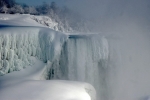Noctuary wrote:Third day. Yesterday I slept only 4 hours. Today, five. I have no idea why this is suddenly happening.
The last time you used your ResMed AutoSet...
was last night (on Wednesday, May 06, 2015)
You had an AHI of 3.17, which is considered technically "treated"
You machine was on for 6 hours, 56 minutes and 2 seconds.
You had a small but acceptable amount of major mask leakage.
Your pressure was under 13.84cmH2O for 95% of the time.
I didn't sleep 6 hours, 56 minutes; I kept the mask on when I awoke hoping to fall back asleep.
The data you posted only shows (roughly) the first
six hours of time when the machine was running. Let's look at a marked up version of your data:

The first blue box that I've put in at the extreme left strongly implies that you fell asleep pretty quickly after turning the machine on. It looks to me like you probably were asleep by 23:30; I'm basing that on the sudden decrease in the size of the inhalations. My guess is that if you zoomed in on the part of the Flow Rate graph at that point, you would see a marked difference in both the size and the
shape of the inhalations.
The first red box that I've drawn in might very well be a short wakeful period, but you were definitely able to get back to sleep after that suspected wake. In other words, I doubt that the centrals scored at this point are real CAs. My guess is that they are post arousal CAs (as you are trying to get back to sleep) or just sleep-wake-junk (SWJ) breathing.
There is another potential arousal around 3:30 that I haven't put in a box. But during the time I have surrounded with the green box, something is going on: The pressure graph is increasing but no events are being scored. That indicates there's probably activity in the snore graph or the flow limitation graph, both of which are missing in this shot. But the breathing itself is less regular than it was---there is now a lot more "spiky-ness" in the Flow Rate curve. I wonder if this represents you starting to wake up/arouse because the pressure increase is beginning to bug you. In other words, I wonder if you are already sleeping very lightly and/or going back and forth between WAKE and SLEEP at this point. Now, if the increase in spiky-ness is due to flow limitations being scored AND you are also actually in half-awake/half-asleep "drowsiness", then the question really becomes:
Did the pressure increase cause you to become more awake? Because if it did, then finding a way to limit pressure increases in response to SWJ-caused flow limitations might help you stay asleep in the long run.
The events in the Red Box that I've drawn starting at around 4:30 look to me to be SWJ events. I'm basing this partly on the fact that there's a lot of spiky-ness in the flow rate curve AND also on the fact that you report keeping the mask on after you woke up in an effort to get back to sleep. There's an official Large Leak scored right around 4:30, along with an "unknown apnea". I wonder if the Large Leak is what pushed you from light dozing (and a mixture of Stage 1/2 sleep and Wake) to being fully aware that you were awake and after the large leak was fixed (either by you or the machine), you were now trapped in being in Wake mixed with a little bit of Stage 1/2 sleep mixed in.
Now the relevant questions for you to be asking yourself:
1) Why were you SUCCESSFUL at getting back to sleep after the first arousal/awakeing/bit of SWJ that occurred around 0:30 (about an hour into the night)?
2) What drove the pressure increase that takes place between 4:00Am and 4:30AM? Snoring or flow limitations?
3) Once you realized that you were awake around 4:00 or 4:30, what could/should you have done that would have maximized the chances of your getting back to sleep in a timely fashion?
Finally one more possibly relevant issue to explore: The summary data on the left side bar indicates that your
median respiratory rate is 23 breaths per minute. This means that for 50% of the night, your RR was AT or ABOVE 23 breaths per minute, which is on the high side. Normal respiratory rates for adults at rest are typically 12-16 breaths per minute (See
http://www.hopkinsmedicine.org/healthli ... 85,P00866/), but many Americans actually have a resting (or sleeping) respiratory that's a bit faster; most American respiratory rates are in the 15-20 breaths per minute range. (See
http://my.clevelandclinic.org/health/he ... ital_Signs). According to the Cleveland Clinic site, a resting RR of more than 25 can be a concern. Now if we were talking about your 95% RR, I'd write that off to normal variation both during sleep and because restlessness can increase the RR for
short periods of time.
But your RR is over 23 for 50% of the night. And that means that you are doing some over breathing, which may mean that you are blowing off just a bit too much CO2 to comfortably transition from WAKE breathing to SLEEP breathing. (See Morbius's
A Sleep Hack? thread.) In other words, it would be useful to see if you are breathing a bit too fast when you wake up and have a hard time getting back to sleep.













